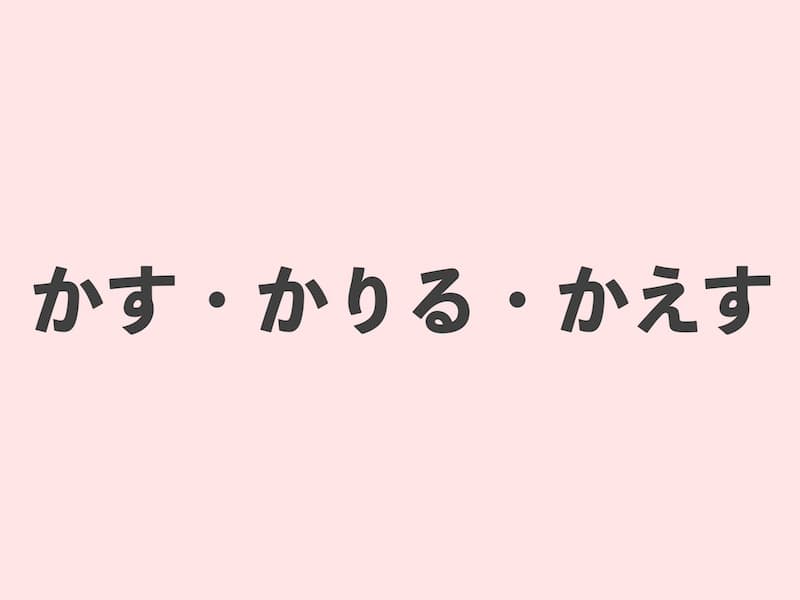Lending and borrowing form essential aspects of daily life interactions, and in Japanese, these actions are expressed through three key verbs: 貸す (Kasu), 返す (Kaesu), and 借りる (Kariru). Understanding the distinctions among these verbs is crucial for accurate communication.
In this guide, we’ll explore the subtle differences and contexts for using each verb correctly. By mastering these loan verbs, you’ll gain clarity in expressing lending, returning, and borrowing activities in Japanese conversations, enriching your language proficiency along the way.
JLPT Textbook Recommendations
Here’s an overview of the differences between 貸す (Kasu), 返す (Kaesu), and 借りる (Kariru):
貸す (Kasu)
Meaning: “To lend” or “To loan.”
Usage: Used when you lend something to someone else.
Example: 私は友達に本を貸しました。(watashi wa tomodachi ni hon o kashimashita.) – “I lent a book to my friend.”
返す (Kaesu)
Meaning: “To return” or “To give back.”
Usage: Used when returning something that was borrowed or lent.
Example: 私は友達に本を返しました。(watashi wa tomodachi ni hon o kaeshimashita) – “I returned the book to my friend.”
借りる (Kariru)
Meaning: “To borrow.”
Usage: Used when you borrow something from someone else.
Example: 彼女は図書館から本を借りました。(kanojo wa toshokan kara hon o karimashita.) – “She borrowed a book from the library.”
These verbs are closely related and form a cycle of lending and borrowing. 貸す (Kasu) is to lend something, 返す (Kaesu) is to return what was borrowed or lent, and 借りる (Kariru) is to borrow something from someone else. Understanding these distinctions is crucial for clear communication when discussing actions related to lending and borrowing in Japanese.




コメント